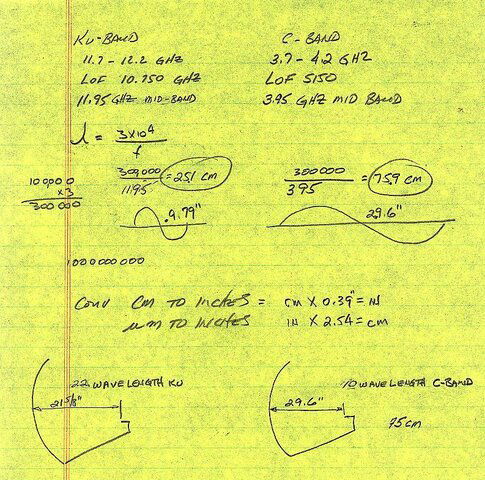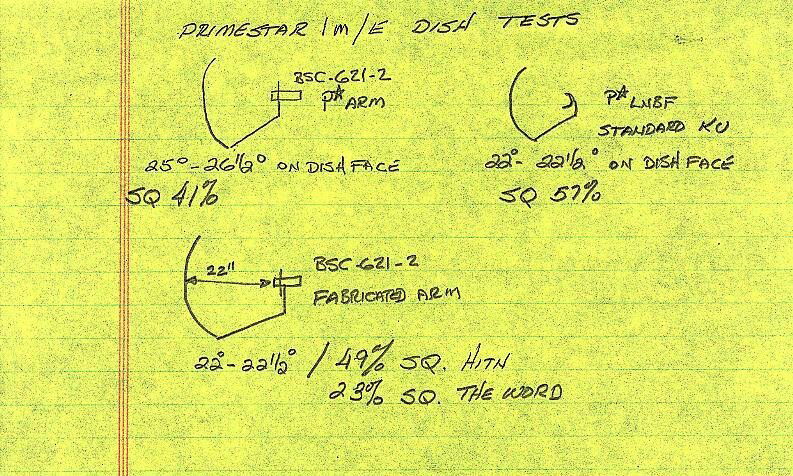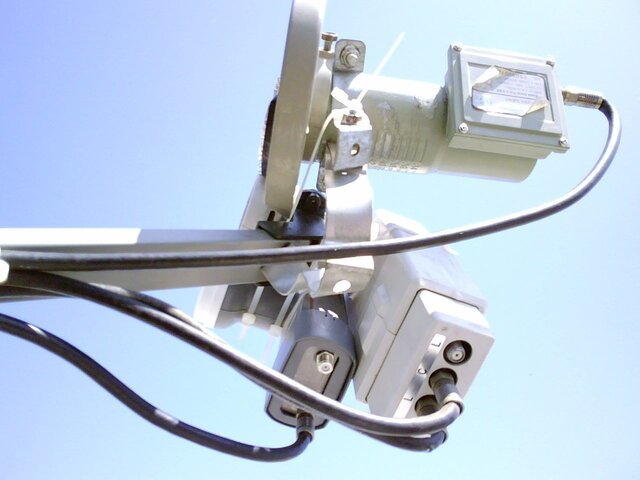With the DREAMFOX dish and LNBF setup you get the perfect storm. This dish and focal distances come into play here. The wavelengths for KU and C Band on this dish create an interesting result. The C-band signals are exactly 90 degrees phase shifted.
The number of wavelengths the focal point of a dish is from the surface means absolutely nothing. The only thing that matters is that at the focal point the distance all of the reflected waves are traveling before they reach the focal point is as close to exactly the same as possible such that all the signal arriving at the focal point will be in-phase with respect to each other. A parabolic dish is different in this regard than other antennas that have reflectors, such as yagis. For antennas like Yagis it matters because the driven element is receiving energy from both the incoming signal (and any director elements) in front of it and reflected energy from the reflector behind it at the same time. therefore it must be spaced a certain multiple of a wavelength to assure these signals are in phase and add together. With a parabolic dish this isn't necessary as all the energy arriving at the focal point is reflected. All that's necessary is that the reflector is as near a perfect parabola as possible.




















